Hepialus humuli (common ghost moth)
The common ghost moth, Hepialus humuli, is widespread in most of Europe and Great Britain with a distinct form occurring on North Atlantic islands.
It is one of the largest micro moths in Europe, with the wingspan of females reaching 80mm.
Species detail

A stamp from the Faroe Islands which features Hepialus humuli. The name Hulda refers to a creature in Norse and Germanic mythology, and allegedly means 'invisible ghost'.
Hepialus humuli, is the only species in the genus Hepialus. It belongs to the primitive moth family Hepialidae, which:
- is one of the earliest evolutionary lineages within moths and butterflies
- has approximately 600 species
- is found in most regions of the world, with the greatest diversity in Australia and south east Asia
Unlike many species in the family Hepialidae, Hepialus humuli is not a pest on plants of particular interest to humans. Nevertheless, as the common name ghost moth indicates, the species has definitely caught human imagination.
The name undoubtedly originates in the ghostly, shimmering impression a hovering swarm of males can give at dusk, especially if the swarm is extended vertically along a tree trunk.
-

Appearance
Find out about the appearance of the ghost moth and how the colouring and markings of Hepialus humuli and its subspecies, Hepialus humuli thulensis, differ. Discover the reasons believed to be behind this striking variation.
-

Biology
Hepialus humuli females lay an extraordinarily large number of eggs, dropping them to the ground whilst flying. Learn more about the ghost moth's life cycle and how the males attract females.
-

Distribution and habitat
The ghost moth favours habitats such as old pastures. Find out more about where Hepialus humuli can be found.
-

References
Get reference material for Hepialus humuli.
Images
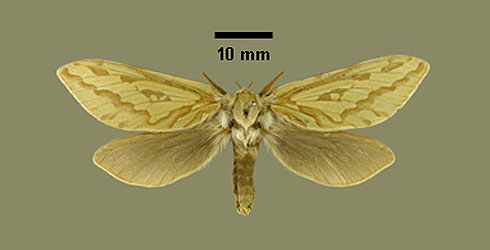
Upperside of the Hepialus humuli female.
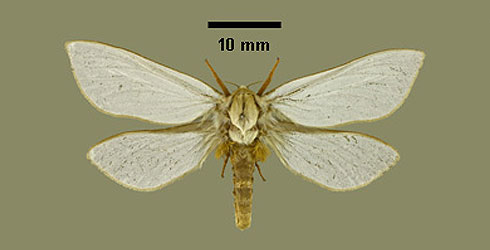
Upper side of the Hepialus humuli male.
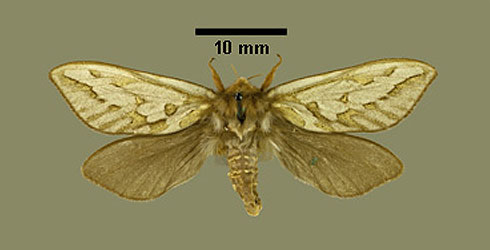
Upper side of the subspecies Hepialus humuli thulensis. This distinct form of the ghost moth occurs on the Shetland and Faroe Islands.
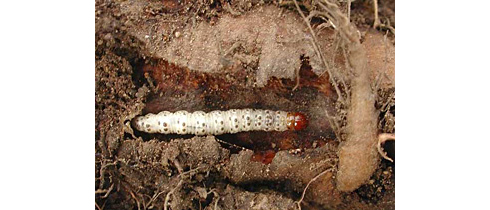
The shiny, whitish, brown-headed Hepialus humuli larva. © Chris Harlow
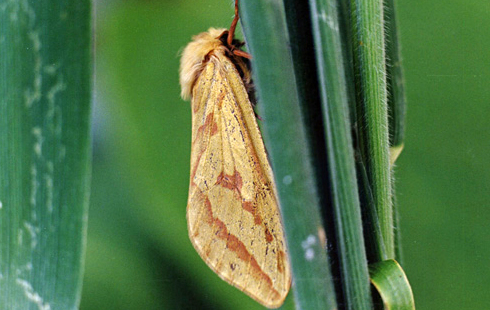
A sitting female ghost moth, Hepialus humuli © Ian Kimber

